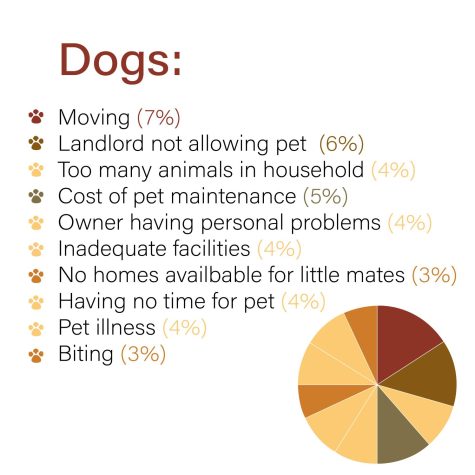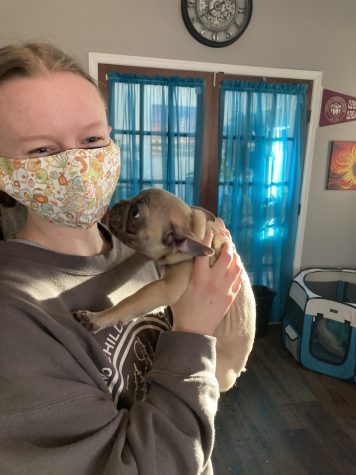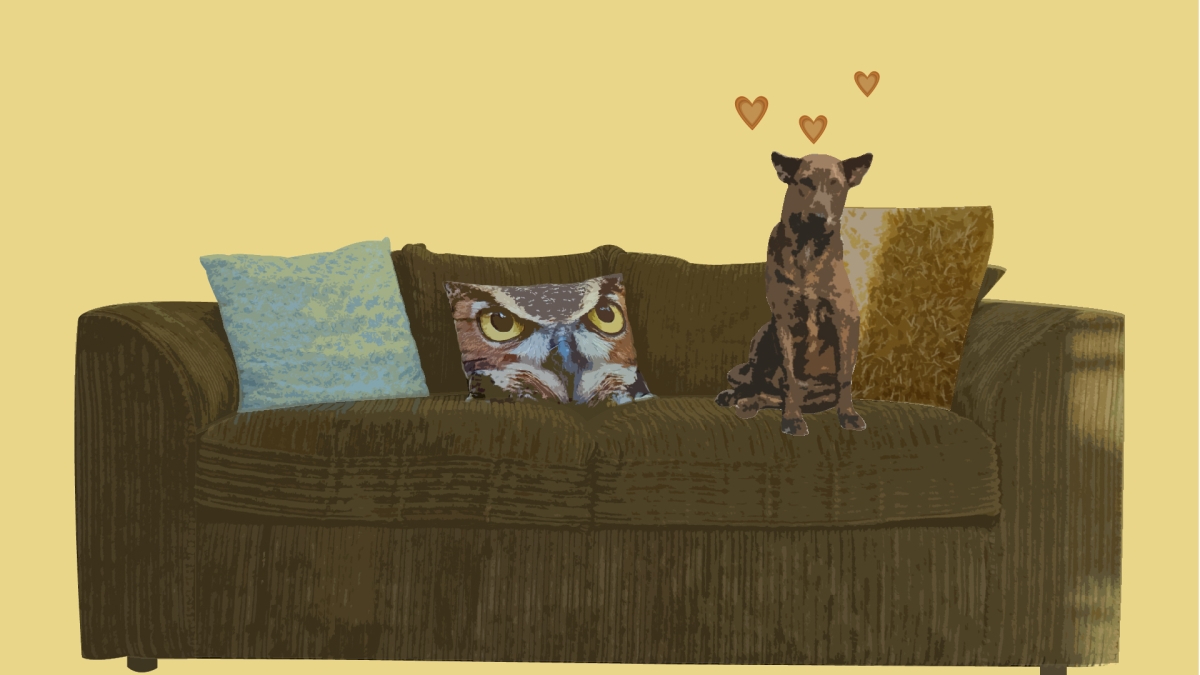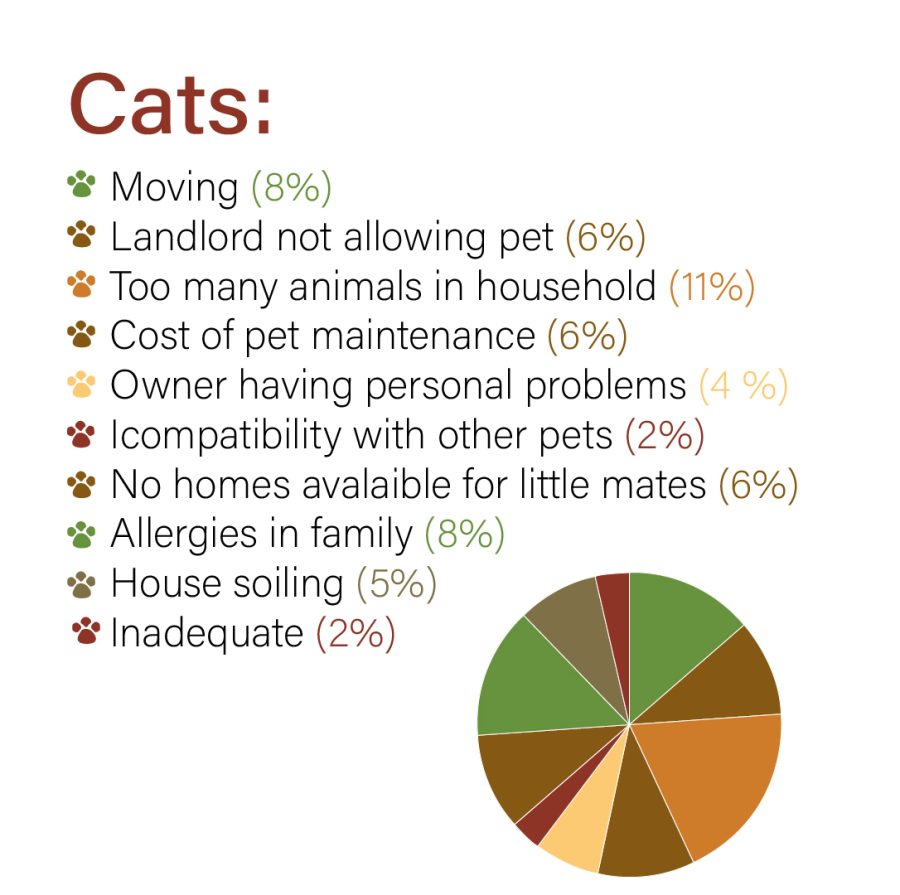Good or sufficient pet care: How care can affect quality of life
Good pet care is essential and should be a priority for any animal owner. Disregarding pet care leads to problems for animals, including diseases, health complications, and euthanasia; caring for animals allows them to thrive and live a long life.
November 8, 2022
He was pale and losing color by the minute.
I could see the fleas crawling and jumping on the pit bull mix as a veterinary technician did a general examination at an emergency pet care hospital.
There were layers of dead and alive parasites in pockets under his ears, taking his blood cells.
He was an outdoor dog, left in a metal run day and night with little socialization, interaction, or love from his owners.
The family that had brought the dog, a gray pit bull, was concerned about his extreme weight loss. After a quick glance, it was clear weight loss was the least of the problems the dog was facing.
He was dehydrated and undernourished. His blood was thinned, with very few red blood cells present because of the severe case of fleas. It was one of the worst blood smears the veterinarian had seen in her whole career.
The family could not afford his treatment and he had to be euthanized on the spot.
Though the pit bull mix was a part of the family, he had experienced less than quality care as he was left outside in a run with minimal interaction.
Pets are adopted every day into homes that are not prepared to have a pet, do not understand the care that must be given to a pet, and do not care enough to give a pet a good life.
At the Kansas Humane Society, the requirements to adopt a pet are minimal. There is an extremely minimal level of screening that is done before someone is allowed to adopt a pet. This means that practically anyone is able to adopt an animal at any given time, regardless of their home situation and level of preparedness.
People adopt pets to feel loved. They make a commitment to care for them to the best of their abilities.
If a dog is going to be left outside, not interacted with, and not receive any veterinary care then the parents are not doing all they can to ensure that the dog is healthy and happy.
Vet care is expensive. There are ways to make it more affordable, but it is still expensive. However, it costs significantly less to pay for preventative care for heartworms than it does to treat an animal when they get heartworms. At Wichita Pet Wellness, it can be as much as a $1,850 difference.

With so many payment plan options available and ways to make pet care more affordable, there is no excuse
for the level of animal deaths due to neglect. Euthanizing a dog because his owner did not choose to get him on preventatives for heartworms or fleas and then decided to leave him outside should not be acceptable.
Before adoption, people must make sure they are prepared for the responsibility that comes with having a pet. Having space, time, and money are all essential when owning a pet and have to be considered.
Does your living arrangement have enough space for an animal? If the animal gets bigger, will space still be adequate? What about a yard to play in or a park?
Do you have time to play with them and spend time with them each day? What about flexibility to take them to the vet when they need to go?
Do you have money to pay for parvo and heartworm vaccines? What about flea and tick preventatives year-round?
I can safely say that I have adequate space for another pet, but have neither the time nor the money to care for an animal right now. I have thought it through and know that despite wanting to adopt and give a pet a good life, I do not have the means to do so.
Thinking through adoption and the many different aspects of having a pet is essential in lowering the surrender, neglect, abandonment, and euthanasia rates.
Pets give love unconditionally; we need to make sure to do the same with them
Animal care basics
There are many different pieces to consider when thinking about good pet care. Although costly and time consuming, ensuring a pet is properly cared for is most important when considering getting a pet.
Although similar to that of dogs, cats are surrendered just as often as dogs to animal shelters. Surrendering an animal can be the best decision in terms of animal welfare, but it still has its faults.
I remember begging my parents for pets when I was small, as I’m sure lots of kids did at some point in their childhood.
It starts as simple as seeing a dog in the park or a friend sharing about their hamster. Once the idea is planted, the begging begins and parents get frequent requests and proposals about what pet their child wants and why they should get it.
As kids get older, the proposals become more and more articulate; research is put in about the animal, their care, and why it would be the perfect pet. However, kids often skip over the topic of pet care in their request.
Just as kids gloss over adequate vs good pet care, some adults do so as well, thinking they are completely prepared for their new pet when, in actuality, they might not have thought through some of the issues that could come up.
For example, a four-month-old German Shepherd puppy is fairly small and easy to manage. However, as an adult, a German Shepherd can weigh as much as around 88 pounds on average according to Vetericyn and eat as much as three and a half cups of food a day according to Feeding my Dog Breed.
Research about a particular breed of dog is important before adoption for this reason. A German Shepherd puppy could be completely fine in an apartment in the Wichita area, but as it grows, it lacks space. A puppy is much less expensive, in some ways such as cost of food and preventative care, but as a dog grows, the cost grows with it.
“Experienced, responsible owners are aware of the costs associated with pet ownership,”Christy Rafferty, DVM, a vet at Wichita Pet Wellness, said. “But young people getting their first pet on their own or someone who gets a pet on impulse (from everything from a Walmart parking lot to a pet store such as Petland) typically are not. These people can be shocked by the ongoing costs of food, supplies, grooming, and veterinary care.”
Being prepared for the cost of a pet includes food, space, training, and veterinary care. With all the additional costs, veterinary care adds a hefty amount to the total cost of having a pet, though it is completely necessary to ensure that pets remain healthy.
“Small breed dogs typically have poor dental health,” Rafferty said. “With good vet care their entire lives, they will hopefully have few extractions and the rest of their body will not suffer from the disease that poor dental health causes in many other organ systems. With poor vet care, their teeth will literally rot out of their mouths and they will suffer other diseases secondary to the dental disease, such as heart disease”
The cost of having a pet and inadequate space are two of the leading reasons for why animals are surrendered to shelters according to Pet Finder.
While surrendering a pet is a good option for those who can no longer care for a pet, Rafferty believes it is important to understand the different aspects of good pet care before the adoption even occurs.
“Good pet care consists of good preventative care such as regular physical exams, vaccinations, and administering medication to prevent disease,” Rafferty said. “It also includes treating pets appropriately for illnesses. However, good pet care doesn’t stop with good physical care. It also means providing love to an animal. Good pet care is really no different than good child care.”
Ensuring a pet is stimulated regularly, either with toys or socialization, as well as being physically active and healthy are important in pet ownership.

“Good quality food, socialization with people, and pets if they enjoy that; love; training for good behavior but also for enrichment; all of these things enrich pets’ lives,” Rafferty said. “And of course, good vet care and grooming are also very important.”
Sometimes, it is impossible for people to meet the needs of their pet, whether it be energy level, cost of food or preventative care, or even a place to sleep. Surrendering the animal to a shelter, in these cases, can be the best option. If the neglect continues, it can become a much larger issue and result in the loss of a pet either from neglect or from euthanasia as a result of these two.
According to the American Society for the Prevention of Cruelty to Animals, around 920,000 animals are euthanized each year in shelters. According to Animal Humane, that is 56% of dogs and 71% of cats.
Whether these shelter animals have been surrendered, abandoned, abused, or found for reasons unknown, better pet ownership standards should be the norm for all of them.
Animals are often euthanized in shelters due to aggressive behavior. Sometimes caused by abuse, mistrust, or previous training, these animals often have a background that is unknown to the shelter staff and could pose a threat to them.
Just as we treat humans with mental disorders or anxiety, pets can get help for their issues through trainers who are able to work with them and teach them how to cope. Aggressive dogs can learn how to be mellow and anxious dogs can learn not everything is scary.
Euthanasia outside of shelters varies widely in terms of reason; sometimes dogs are euthanized because it is more humane to let them go than let them suffer, and sometimes they are euthanized because they are so old and their health is rapidly declining. However, sometimes they are euthanized because they have been so badly cared for that it would cost their parents too much to treat them.
“Some pets are in good health, physically and mentally, despite poor care,” Rafferty said. “Others have serious health challenges despite good care.”
Though some health complications are unavoidable and euthanasia is a humane option, proper pet care leads to fewer health risks and decreases the likelihood of euthanasia overall.
Euthanasia is cheaper than treatment a majority of the time for serious health complications.
“The cost of good pet care is an issue,” Rafferty said. “It is one of the worst parts of my job. There are many pets who do not receive appropriate care or are euthanized due to nothing more than lack of money. In my perfect world, human and animal health care are rights, not privileges. People say owning a pet is a privilege. And it is. But it is so wrong to say that only those with a certain amount of money deserve to experience the love of the human-animal bond. Everyone does.”

